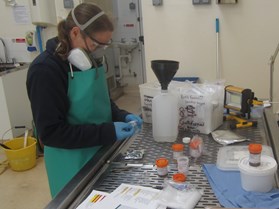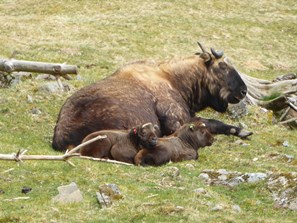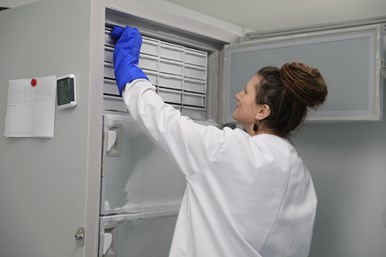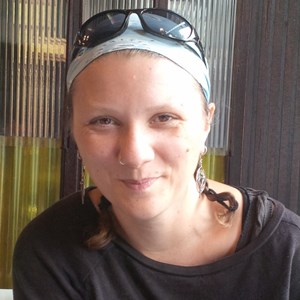Zoos biobanking for the future
29/04/2021 in RZSS
Dr Gill Murray-Dickson is the biobanking research fellow at the Royal Zoological Society of Scotland and National Museums Scotland. Gill coordinated the set-up of the RZSS WildGenes Biobank and manages sample donations and requests from other organisations and researchers.
Earlier this year, the RZSS WildGenes Biobank facility received its largest sample donation to date from Paignton Zoo’s veterinary team. Over 1,000 biological samples from hundreds of different species arrived - it was like all our biobanking birthdays and Christmases had come at once!
The plan for these animal tissue samples is to archive them in the biobank’s big -80 degrees Celsius Ultra Low Temperature freezers, preserving the genetic material they contain for years to come. They are a significant addition to the EAZA biobank collection, part of which is housed at RZSS and it means they can be used by conservation researchers now and well into the future.
I wanted to know more about the people who had done such an amazing job collecting the samples, so I spoke to Kelly Damon, vet nurse at Paignton Zoo. Kelly told me all about the vet team’s work and why it is so important to collect samples from their animals:
 Kelly Damon, vet nurse at Paignton Zoo
Kelly Damon, vet nurse at Paignton Zoo
How long did it take to collect such a huge range of samples?
I have been cataloguing and storing samples for about 20 years!
How many animal species do you work with altogether?
182 at the moment, but it varies from year to year.
Tell us more about the type of samples you collect and how you collect them?
There are lots of situations where the vet team may take blood samples as part of a routine health check, for example when our animals move from one zoo to another. We also use blood samples to see if the animal is pregnant or measure hormone levels. If an animal is showing signs of ill-health, a blood sample can help identify signs of infection, inflammation or organ damage. If one passes away, we’ll do a post-mortem examination to determine cause of death which means we’ll collect organ tissues like heart, liver, kidney and lung. All of these give us an opportunity to save a bit of the sample for the biobank.
What do you use the samples for, is it just to send to the biobank?
First and foremost, samples are used to assess an animal’s health, screen for disease and to see if they are pregnant. In doing this, we can improve the welfare and health of the animals at the zoo and reduce the risk of spreading disease from our animals to local wildlife, or to people. We store samples in labelled pots in a -20 degree Celsius freezer so they are preserved. I keep an up-to-date list that we can send on to the biobank and donate for other research projects.
What are the most challenging animals to collect a sample from? A lot of our animals at the zoo need to have a general anaesthetic to allow us to get a blood sample safely. I always find takin to be particularly awkward! Takin are a large species of goat-antelope usually found in the eastern Himalayas. Their ear veins are relatively small compared to their big bodies, which makes it difficult to collect a sample when we need one! The animals are anaesthetised with medication that can also lower their blood pressure, which makes it even harder. Luckily our vets are very skilful at getting these tricky samples.
A lot of our animals at the zoo need to have a general anaesthetic to allow us to get a blood sample safely. I always find takin to be particularly awkward! Takin are a large species of goat-antelope usually found in the eastern Himalayas. Their ear veins are relatively small compared to their big bodies, which makes it difficult to collect a sample when we need one! The animals are anaesthetised with medication that can also lower their blood pressure, which makes it even harder. Luckily our vets are very skilful at getting these tricky samples.
Why do you think it is important to send the samples you are not using to a biobank? What would you say to encourage other zoos, vets, and researchers to do the same?
Collecting samples for long-term storage means we can contribute to species research and ensure that the animals we look after also help vital conservation efforts, both in life and after death. Biobanks have the right facilities and protocols to ensure that samples are stored correctly, and it makes them available to a wide range of conservation researchers.
This incredible range of samples demonstrates the vital role zoos play in biobanking. By working together, we can ensure that threatened species, and the researchers working to protect them, are given the best chance.
 Dr Gill Murray-Dickson at the RZSS WildGenes Biobank
Dr Gill Murray-Dickson at the RZSS WildGenes Biobank
If you are a zoo vet wanting to know more about submitting samples to the EAZA Biobank collection, please contact biobank@eaza.net
If you want to know more about the RZSS WildGenes Biobank or accessing samples from the wider CryoArks community, please email biobank@rzss.org.uk


![]()
Featured Articles

An update from the Budongo Forest
19/04/2024 in Conservation

Edinburgh Zoo named best zoo in Scotland
15/04/2024 in Edinburgh Zoo


























Follow EZ